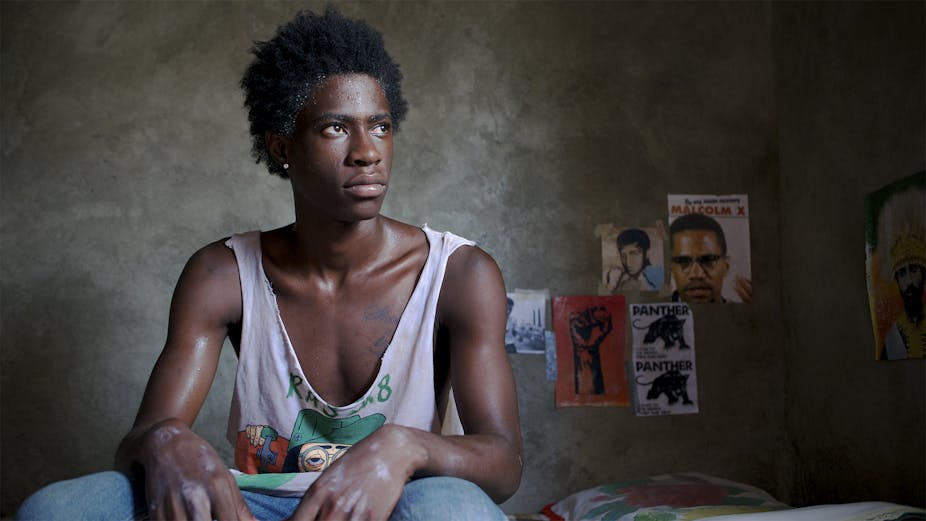The Human Rights Arts and Film Festival (HRAFF), which opens today, aims to “challenge, touch and inspire audiences from all walks of life” and to provide a “shared site whereby artists, human rights organisations and the Australian public are united by their desire to contribute to social change”.
But is it reasonable to expect the HRAFF – or any other “themed” festival – to lead to any form of lasting change or activism? And if so, how can that be measured? Such questions are more than hypothetical. As festivals worldwide respond to austerity cuts – and the impact these have on their funding models – they are of considerable importance.
Austerity impact
The HRAFF model provides a template for a collaborative partnership approach to sponsorship and engagement, as can be seen on its website.
However the reality for many arts and human rights festivals globally has been state and private funding cuts resulting in significant cutbacks on events and engagement, as seen in Italy, Holland, and Britain. Despite the strong support of arts by the general public, the arts sector in Australia has not been immune.
In 2014 the federal government announced a funding cut of A$100 million over four years to the arts. The principal arts funding body, the Australia Council, lost more than than A$10 million out of its A$222 million annual budget in 2014 and A$6.4 million for the following three years resulting in a cut just shy of A$30 million.
In August last year the Australia Council announced the reduction of grant categories from 154 to five aligned with an “enhanced peer-review process” and requiring a “stronger evidence base” .
Capturing the impact of arts and cultural activity on the community is the name of the game.
Funding models
Last year’s boycott of the Sydney Biennale by artists protesting the event’s ongoing sponsorship by Transfield Holdings made the point – very publicly – that where festival funding comes from matters.
Last month, artistic director of the Queensland Theatre Company Wesley Enoch argued that an “arms length” approach could be taken in accepting the support of mining company Sibelco to fund his play Black Diggers. On ABC’s The Drum, he wrote that:
since time immemorial, the artist has relied on the largesse of the tribe to allow them space to practise their craft. To be excused from the day to day gathering of food and collective survival responsibilities so that they can perfect their skills and reflect on tribal cultural needs.
This need for patronage - from royals, from governments, from wealthy individuals, from corporations - has long been a source of tension.
So what are the alternatives?
Many film festivals now use crowdfunding sites such as Kickstarter and StartSomeGood to raise funds. Last October, following the expiry of a sponsorship by Anil Ambani’s Reliance Entertainment, the Mumbai Film Festival was in danger of ending.
A supporter of the festival, film critic Anupama Chopra, turned to crowdfunding, which received huge support from the Indian film and acting industries.
The impact of the initiative has seen other film festivals – such as the KASHISH Mumbai International Queer Film Festival, South Asia’s biggest (and India’s only) mainstream LGBT film festival – adopt a similar model.
In Australia there are also innovative uses of crowdfunding. In February 2014 the Transitions Film Festival partnered with StartSomeGood and Cinema Nova to launch Cinema By Demand, whereby were paid for and curated through crowdfunding.
Many businesses and corporations keen to embed a corporate social responsibility ethos have also been integral to supporting and funding festivals. And – as part of the funding terms and conditions of such support – there is a focus on gathering stories of change and impact.
Measuring impact
Participant Media, a not-for-profit organisation based in the United States, in partnership with the Bill and Melinda Gates Foundation, the Knight Foundation and the University of Southern California, offers one way (though it’s still in development) of measuring impact.
The Participant Index compiles raw audience numbers from the United States for issue-driven narrative films, documentaries, television programs and online short videos, along with measures of conventional and social media activity, including Twitter and Facebook presence.
The project captures:
• What viewers learned while watching
• How viewers felt after watching
• What viewers did as a result
Key findings of the inaugural report, published last year, found that 77% of viewers placed human rights at the top of their list of important social issues, followed closely by healthcare, education, crime, and hunger.
Stories about animal rights and food production/sustainability were most likely to provoke individual action. Programs that focused on data and online privacy, economic inequality, and health care spur the most information seeking behaviours, while global health and poverty was most likely to inspire individual-driven community engagement.
Emotional impact
Measuring the impact of arts and cultural events requires long-term tracking and customised tools. We need to remember that a single numerical figure does not reflect the value of a cultural event that can inspire others who dream of recognition, human rights and democracy.
Developing those systems, and mapping that impact, is – in its own way – a path towards social change.
The Human Rights Arts and Film Festival opens today. Details here.

